

K-WANG


ABB UNITROL ® 5000 excitation system
ABB UNITROL ® 5000 excitation system
System Overview
UNITROL ® 5000 is ABB Switzerland UNITOL ® The most powerful product in the series of excitation systems, the microprocessor based voltage regulator adopts the latest technology, and its research and development integrates over 40 years of semiconductor voltage regulator experience and more than 15 years of microprocessor technology application experience.
application area
Suitable for static excitation systems (SES) powered by 50Hz, 60Hz, or 16 ²/∝ Hz, with excitation currents ranging from 1000ADC to over 10000ADC.
An automatic voltage regulation system (AVR) suitable for excitation machines, with special functions and power supply frequencies ranging from 16 ²/∝ Hz to 400Hz.
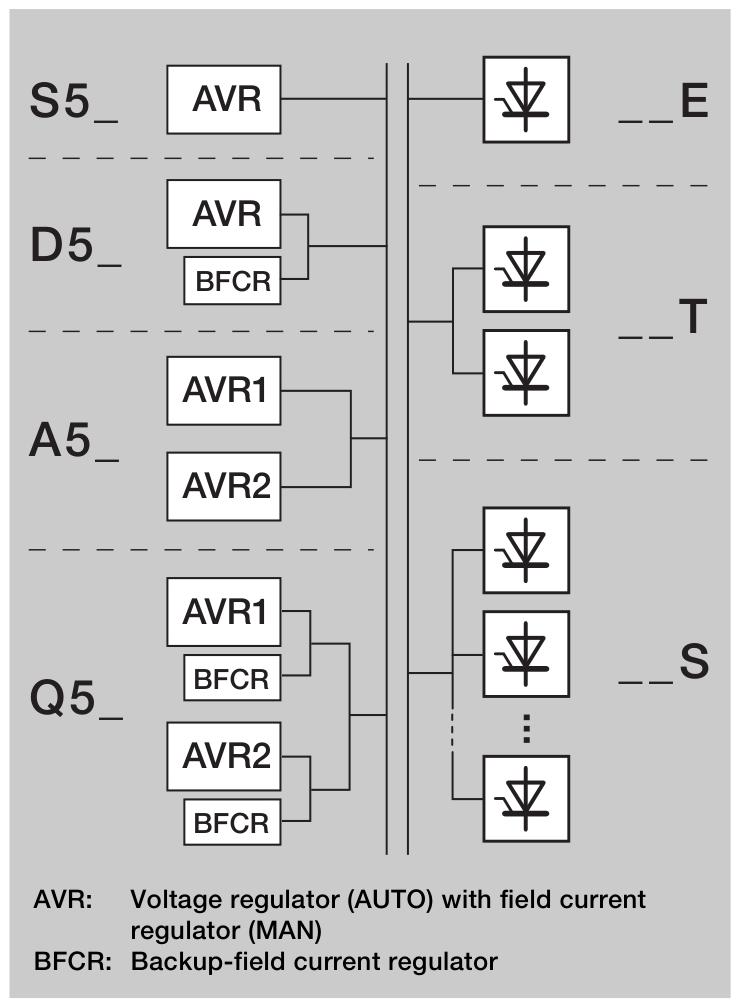
Core features of the system
Highlights of the regulator
Additional regulator redundancy: Dual channel system equipped with backup current regulator.
Digital input processing: three-phase voltage measurement, three-phase current measurement, and digital processing of input values through signal processors.
Additional features: Implemented solely through software solutions, without the need for additional hardware.
Additional Input/Output: Utilizing ARCnet ® The device can be easily expanded to the required quantity, including both digital and analog types.
Event and error logs: with real-time timestamps, can be remotely queried.
Power section highlights
Power converter redundancy: It can support up to 8 parallel power converters, and its redundancy is completely independent of the regulator configuration.
Intelligent power conversion electronic devices: realize active current balancing between power converters, four quadrant operation (can generate negative excitation current), thyristor current monitoring, fan control and monitoring, fuses, power converter temperature and cooling airflow monitoring, and bridge current display functions.
system communication
Supports the most commonly used protocols for advanced control systems.
A second control panel can be installed in the control room, with a maximum distance of several hundred meters.
The remote diagnosis can be carried out by ABB service office through the Internet using PC software "AVRview".
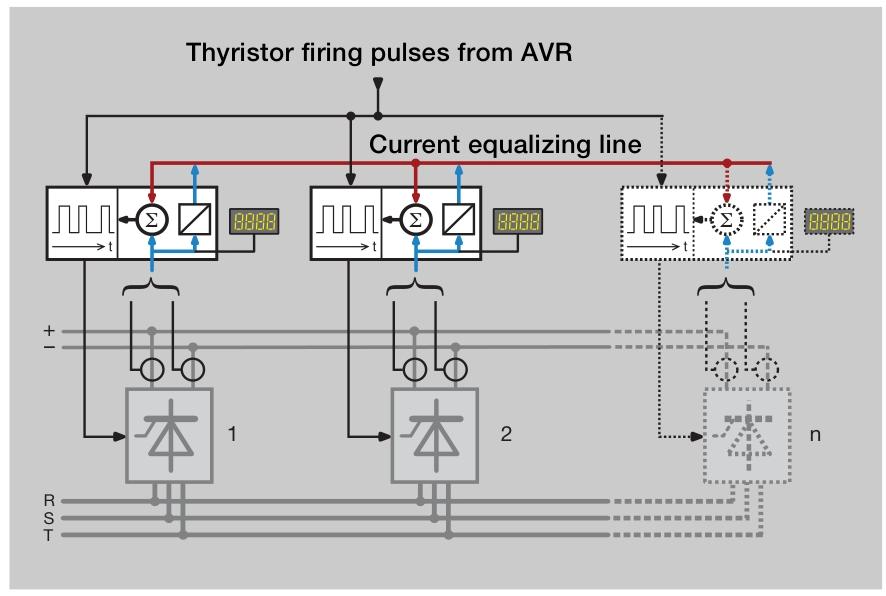
System configuration
UNITROL ® The 5000 adopts a modular "building block system" design, with over 80% of the system consisting of system components that have undergone type testing, ensuring higher quality and reducing delivery time.
Structural composition
The power section includes one or more thyristor power converters, excitation circuit breakers on the AC or DC side, excitation flicker circuits, and solid-state demagnetization systems with Crowbar.
High availability design
In addition to voltage regulators (AUTO) and excitation current regulators (MAN), independent current regulators (separate devices with independent power supply, measurement, and gate control circuits) can also be used to improve the availability of the excitation system. Due to the tracking control of all inactive regulators, a smooth switch to the backup regulator channel can be ensured in the event of a failure in the active regulator.
Internal Communication and Power Converter
The internal data exchange of the system is carried out through the serial ARCnet bus, and additional interfaces or control panels can be located and operated within thousands of meters through optical links.
Adopting DCS 500 series compact power converters or UNL 13300 and Verithyr power converters, the type and parallel quantity are determined based on the required excitation current, maximum voltage, and maximum duty cycle required by the customer. It also provides options such as natural or forced cooling, redundant fans, and the ability to maintain a power converter during system operation (with a 5-pole isolator).
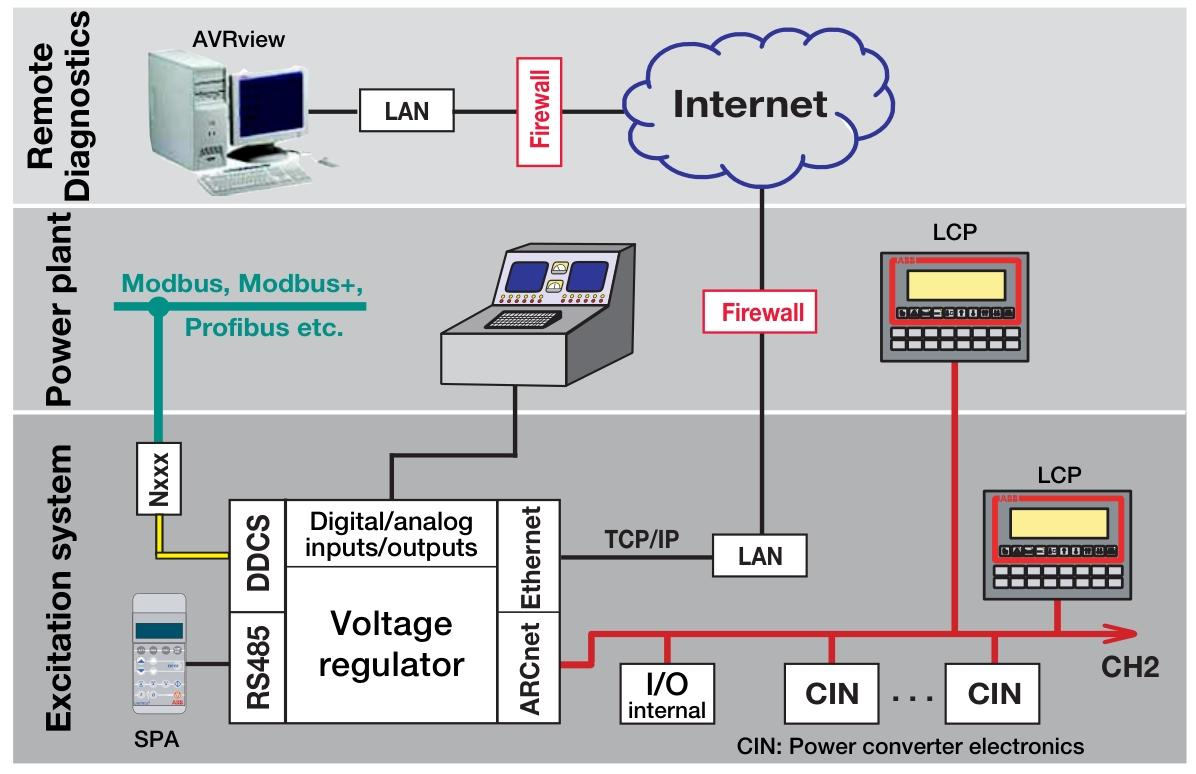
Software functions
Standard software functions
Regulator functions: including voltage regulator with PID filter (automatic mode), excitation current regulator with PI filter (manual mode), reactive and/or active current droop compensation, multiple limiters, tracking control, power factor/reactive load control, manual limitation, and optional power system stabilizer (PSS), etc.
Protection and monitoring functions: covering multiple functions such as excitation flashing time, overcurrent protection, volt/hertz protection, demagnetization protection, rotor temperature monitoring, etc., and can be classified at three different action levels (fault display only, switching to the second channel or backup regulator, instantaneous excitation trip).
Control function: All standard excitation sequences and interlocks are based on software, using fixed pre programmed function blocks that users can expand through free programming function blocks.
Data recording: The event recorder (fault log) can record up to 100 events and alarms with real-time timestamps, and the data recorder (data log) can record up to 6 measurement signals in real time.
Processor monitoring: After the power is turned on, the processor starts self checking and also has an internal watchdog function to monitor the correct execution of the program.
Additional software features
Application Function Blocks: In addition to standard software functions, there are various general application function blocks, such as input/output extensions, specific monitoring functions, etc.
Power System Stabilizer (PSS): Provides three types of PSS2A, Adaptive Power System Stabilizer (APSS), and Multi Band Power System Stabilizer (MBPSS) that comply with IEEE standards.
Rotating diode monitoring: It can detect short circuits or open circuits in the rotating rectifier branch of a brushless system over a wide speed range.
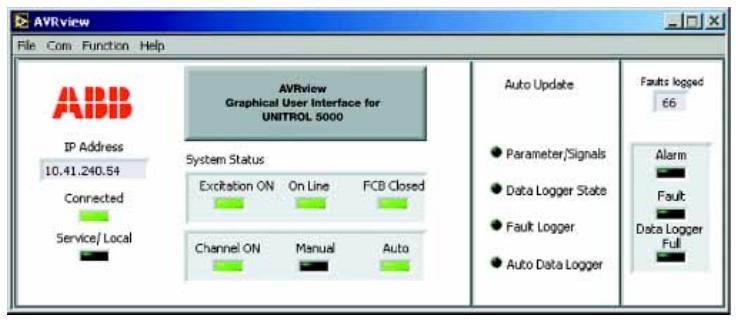
Communication and software tools
System communication
Human computer interaction: The service panel SPA is connected to the system through RS485 interface, and the control panel LCP (optional) is connected through ARCnet bus, which can be used for local or remote control.
Advanced control system integration: Communication with advanced control systems is achieved through appropriate bus couplers (connected to DDCS interfaces via optical links), supporting standard protocols such as MODBUS, MODBUS+, Profibus, etc.
Remote diagnosis: With the optional remote diagnosis function, ABB service personnel can access the system through the Internet with the customer's permission.
Debugging and maintenance software tools
GAD tool: also known as "Graphic Application Designer", is a PC software tool used for application programming, with functions such as application programming, creating and modifying program documents.
CMT tool: a debugging and maintenance tool that can modify application programs, monitor system functions, change parameter values, and also has multiple window functions such as trend display, application display, parameter and signal display.
AVRView remote diagnosis
Additional CAP boards need to be inserted for each voltage regulator channel, which can be connected to a local area network (LAN) or telephone network through Ethernet cables to achieve functions such as operation status display, signal and parameter display, parameter change, etc., making remote diagnosis as convenient as on-site service.
System advantages
Modular structure design, easy to assemble and expand, can quickly meet different needs.
High redundancy design, including regulator redundancy and power converter redundancy, significantly improves the availability and reliability of the system.
Powerful communication capabilities, supporting multiple protocols and remote operation and diagnosis, facilitating system integration and maintenance.
Rich software functions and tools enable precise control, comprehensive monitoring, and efficient debugging and maintenance.
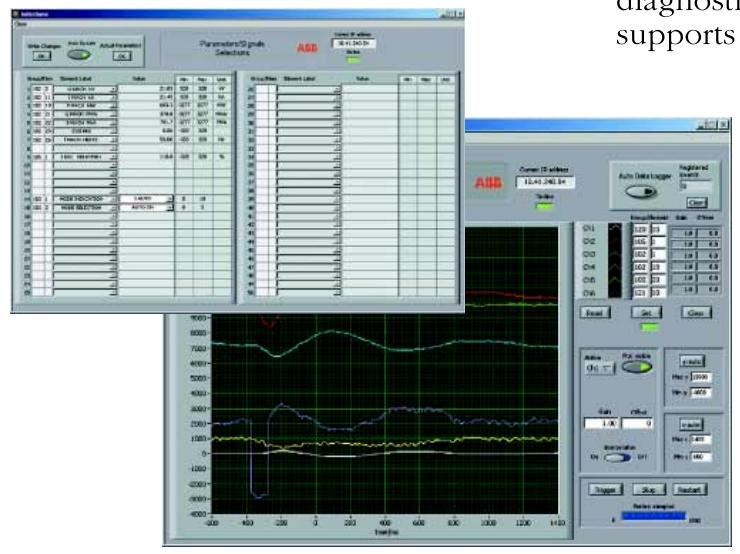
- YOKOGAWA
- Energy Access
- Renewable Integration
- Energy Subsidies
- Energy and Water
- Net zero emission
- Energy Security
- Critical Minerals
- A-B
- petroleum
- Mine scale
- Energy and Gender
- Covid-19
- man-machine
- Reliance
- ADVANCED
- SEW
- ProSoft
- WATLOW
- Kongsberg
- FANUC
- VSD
- DCS
- PLC
- Sewage treatment
- cement
- Yaskawa
- Woodward
- BOSCH Rexroth
- MOOG
- General Electric
- American NI
- Rolls-Royce
- CTI
- Honeywell
- EMERSON
- xYCOM
- Construction site
- Siemens
- architecture
- Industrial information
- New energy
- Automobile market
- electricity
- Motorola
- HIMA
- ABB
- Rockwell
- Schneider Modicon
- MAN
- GE
- TRICONEX
- Control Wave
- ALSTOM
- AMAT
- STUDER
- KONGSBERG
- MOTOROLA
- DANAHER MOTION
- Bentley
- Galil
- EATON
- MOLEX
- Triconex
- DEIF
- B&W
- ZYGO
- Aerotech
- DANFOSS
- KOLLMORGEN
- Beijer
- Endress+Hauser
- schneider
- Foxboro
- KB
- REXROTH
-
Kollmorgen S33GNNA-RNNM-00 - Brushless Servo Motor
-
Kollmorgen 6sm56-s3000-g-s3-1325 - Servo Motor
-
Kollmorgen AKM52K-CCCN2-00 - Servo Motor
-
Kollmorgen PSR3-230/75-21-202 - Power Supply
-
Kollmorgen akm24d-anc2r-00 - Servo Motor
-
Kollmorgen AKM22E-ANCNR-00 - Servo Motor
-
Kollmorgen S60300-550 - Servo Drive
-
Kollmorgen B-204-B-21 - Servomotor
-
Kollmorgen AKM21E-BNBN1-00 - Servo Motor
-
Kollmorgen TT2953-1010-B - DC Servo Motor
-
Kollmorgen pa8500 - Servo Power Supply
-
Kollmorgen BDS4A-210J-0001-207C2 - Servo Drive
-
Kollmorgen TTRB1-4234-3064-AA - DC Servo Motor
-
Kollmorgen MH-827-A-43 - Servo Motor
-
Kollmorgen AKM24D-ACBNR-OO - Servo Motor
-
Kollmorgen 00-01207-002 - Servo Disk DC Motor
-
Kollmorgen AKM21C-ANBNAB-00 - Servo Motor
-
Kollmorgen PSR3-208/50-01-003 - Power Supply
-
Kollmorgen 6SM56-S3000 - Servo Motor
-
Kollmorgen DBL3H00130-B3M-000-S40 - Servo Motor
-
Kollmorgen 6SN37L-4000 - Servo Motor
-
Kollmorgen AKM65K-ACCNR-00 - Servo motor
-
Kollmorgen 6SM56-L3000-G - Servo Motor
-
Kollmorgen AKMH43H-CCCNRE5K - Servo Motor
-
Kollmorgen PSR4/52858300 - Power Supply
-
Kollmorgen KBM-79H03-E03 - Direct Drive Rotary Motor
-
Kollmorgen AKM33E-ANCNDA00 - Servo Motor
-
Kollmorgen U9M4/9FA4T/M23 - ServoDisc DC Motor
-
Kollmorgen AKM13C-ANCNR-00 - Servo Motor
-
Kollmorgen AKM43L-ACD2CA00 - Servo Motor
-
Kollmorgen AKM54K-CCCN2-00 - Servo Motor
-
Kollmorgen M-605-B-B1-B3 - Servo Motor
-
Kollmorgen AKD-P00606-NBAN-0000 - Rotary Drive
-
Kollmorgen 6SM-37M-6.000 - Servo Motor
-
Kollmorgen A.F.031.5 - Sercos Interface Board
-
Kollmorgen 918974 5054 - Servo PWM
-
Kollmorgen U12M4 - ServoDisc DC Motor
-
Kollmorgen AKD-B00606-NBAN-0000 - Servo Drive
-
Kollmorgen MV65WKS-CE310/22PB - Servo Drive
-
Kollmorgen 65WKS-CE310/22PB - Servo Drive
-
Kollmorgen EM10-27 - Module
-
Kollmorgen S64001 - Servo Drive
-
Kollmorgen CR03200-000000 - Servo Drive
-
Kollmorgen 6SM57M-3000+G - Servo Motor
-
Kollmorgen BDS4 - Servo Drive
-
Kollmorgen AKD-P00306-NBEC-000 - Servo Drive
-
Kollmorgen AKD-B01206-NBAN-0000 - Servo Drive
-
Kollmorgen STP-57D301 - Stepper Motor
-
Kollmorgen 6SM37L-4.000 - Servo Motor
-
Kollmorgen 44-10193-001 - Circuit Board
-
Kollmorgen PRDR9SP24SHA-12 - Board
-
Kollmorgen PRD-AMPE25EA-00 - Servo Drive
-
Kollmorgen DBL3N00130-0R2-000-S40 - Servo Motor
-
Kollmorgen S406BA-SE - Servo Drive
-
Kollmorgen AKD-P00607-NBEI-0000 - Servo Drive
-
Kollmorgen AKD-P01207-NBEC-0000 - Servo Drive
-
Kollmorgen CR03550 - Servo Drive
-
Kollmorgen VSA24-0012/1804J-20-042E - Servo Drive
-
Kollmorgen N2-AKM23D-B2C-10L-5B-4-MF1-FT1E-C0 - Actuator
-
Kollmorgen 04S-M60/12-PB - Servo Drive
-
Kollmorgen H33NLHP-LNW-NS50 - Stepper Motor
-
Kollmorgen A-78771 - Interlock Board
-
Kollmorgen AKM43E-SSSSS-06 - Servo Motor
-
Kollmorgen AKD-P00607-NBEC-0000 - Servo Drive
-
Kollmorgen E21NCHT-LNN-NS-00 - Stepper Motor
-
Kollmorgen cr10704 - Servo Drive
-
Kollmorgen d101a-93-1215-001 - Motor
-
Kollmorgen BDS4A-203J-0001-EB202B21P - Servo Drive
-
Kollmorgen MCSS23-6432-002 - Connector
-
Kollmorgen AKD-P01207-NACC-D065 - Servo Drive
-
Kollmorgen CK-S200-IP-AC-TB - I/O Adapter and Connector
-
Kollmorgen CR10260 - Servo Drive
-
Kollmorgen EC3-AKM42G-C2R-70-04A-200-MP2-FC2-C0 - Actuator
-
Kollmorgen BDS5A-206-01010-205B2-030 - Servo Drive
-
Kollmorgen s2350-vts - Servo Drive
-
Kollmorgen AKM24D-ANC2DB-00 - Servo Motor
-
Kollmorgen E31NCHT-LNN-NS-01 - Stepper Motor
-
Kollmorgen PRD-0051AMPF-Y0 - Servo Board
-
Kollmorgen TB03500 - Module
-
Kollmorgen 60WKS-M240/06-PB - Servo Drive
-
Kollmorgen M21NRXC-LNN-NS-00 - Stepper Motor
-
Kollmorgen H-344H-0212 - Servo Motor
-
Kollmorgen MCSS08-3232-001 - Connector
-
Kollmorgen AKM33H-ANCNC-00 - Servo Motor
-
Kollmorgen PA-2800 - Power Supply
-
Kollmorgen MTC308C1-R1C1 - Servo Motor
-
Kollmorgen PRDR0091300Z-00 - Capacitor Board
-
Kollmorgen BDS4A-206J-0024/01502D79 - Servo Drive
-
Kollmorgen S20330-VTS - Servo Drive
-
Kollmorgen S20250-CNS - Servo Drive
-
Kollmorgen SBD2-20-1105-WO - Servo Drive Board
-
Kollmorgen M405-C-A1--E1 - Servo Motor
-
Kollmorgen PRD-PB805EDD-00 - Servo Drive
-
Kollmorgen 6SM57S-3.000-J-09-HA-IN - Servo Motor
-
Kollmorgen AKM33H-ANCNDA-00 - Servo Motor
-
Kollmorgen PCB-00030200-04 - PCB
-
Kollmorgen H22SSLB-LNN-NS-02 - Stepper Motor
-
Kollmorgen BJRL-20012-110001 - Module
-
Kollmorgen BDS4A-206J-0001404A - Servo Drive
-
Kollmorgen H-342-H-0802 - Servo Motor
-
Kollmorgen CR10561 - Servo Drive
-
Kollmorgen BDS5A-206-00010-205B2-030 - Servo Drive
-
Kollmorgen BDS5A-206-00010-207B-2-030 - Servo Drive
-
Kollmorgen mcss08-3224-001 - Connector
-
Kollmorgen M-207-B-23-B3 - Servo Motor
-
Kollmorgen PRD-0041200Z-S0 - Encoder/Resolver Card
-
Kollmorgen MH-225-G-61 - Motor
-
Kollmorgen MT308B1-T1C1 - Servo Motor
-
Kollmorgen BDS4A-240J-0001604C83 - Servo Drive
-
Kollmorgen 6SM57-S-3000 - Servo Motor
-
Kollmorgen N-T31V-15-5B-6-MF3-FT1E-C251 - Actuator
-
Kollmorgen PRD-0051AMPA-X0 - Servo Board
-
Kollmorgen CF-SS-RHGE-09 - Cable
-
Kollmorgen DIGIFAS7204 - Servo Drive
-
Kollmorgen S30101-NA - Servo Drive
-
Kollmorgen DIGIFAS7201 - Servo Drive
-
Kollmorgen PRD-0051AMPA-Y0 - Servo Board
-
Kollmorgen AKM23D-EFCNC-00 - Servo Motor
-
Kollmorgen SE10000 - Servo Drive
-
Kollmorgen PSR4/5A-112-0400 - Power Supply
-
Kollmorgen AKM31H-ANCNC-01 - Servo Motor
-
Kollmorgen M-203-B-93-027 - Servo Motor
-
Kollmorgen CP-SS-G1HE-05 - Connector
-
Kollmorgen AKM42G-ASCNR-02 - Servo Motor
-
Kollmorgen DBL4N00750-B3M-000-S40 - Servo Motor
-
Kollmorgen R3-BK23-152B-12-PL-ASE-BS115 - Actuator
-
Kollmorgen MH-427-B-61 - Motor
-
Kollmorgen cr06902 - Servo Drive




